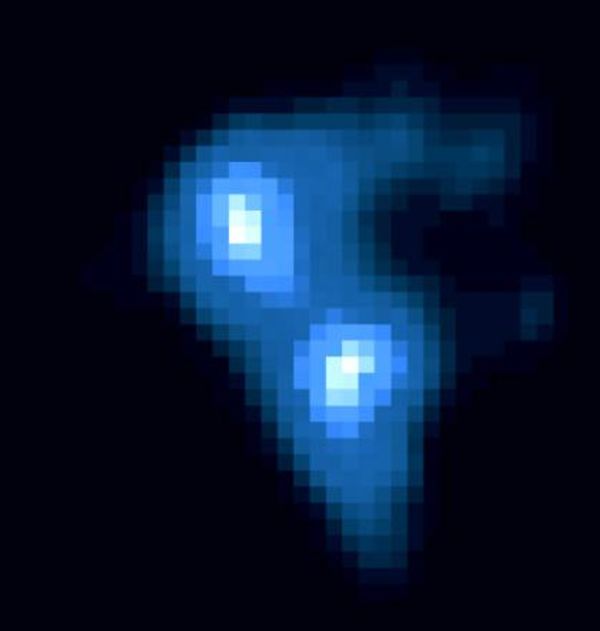Found throughout space are extremely active and exceptionally luminous entities known as quasars. Within these galactic cores are collections of gas and dust that have fallen into supermassive black holes and emit electromagnetic radiation. With nearly a million quasars identified by astronomers as of August 2023, one in particular was said to be home to 140 trillion times the amount of water contained in all of Earth's oceans.
A post shared to X (formerly Twitter) on June 5, 2023, (archived here) saw one iteration of this claim, noting that the quasar in question was the "largest reservoir of water in space." At the time of this publication, the post had received more than 11,000 views:
"Astronomers discover the largest reservoir of water in space, equivalent to 140 trillion times all the water in Earth's oceans". https://t.co/cRxYW4iQUD
— Physics-astronomy (@Physicsastronmy) June 6, 2023
This claim is true. The discovery of the water at APM 08279+5255, a black hole 20 billion times more massive than the sun, was announced by NASA's Jet Propulsion Laboratory on July 22, 2011 (archived here):
Two teams of astronomers have discovered the largest and farthest reservoir of water ever detected in the universe. The water, equivalent to 140 trillion times all the water in the world's ocean, surrounds a huge, feeding black hole, called a quasar, more than 12 billion light-years away.
Described in 2011 in the American Astronomical Society's peer-reviewed journal, The Astrophysical Journal Letters, APM 08279+5255 was said by the JPL to produce the energy of a "thousand trillion suns" in an environment that allowed for the production of a "huge mass of water."
The presence of water vapor wasn't a surprise, but the sheer amount impressed researchers. APM 08279+5255 holds 4,000 times more water vapor than is in the Milky Way, which illuminates how this celestial body operates. The JPL continued:
Water vapor is an important trace gas that reveals the nature of the quasar. In this particular quasar, the water vapor is distributed around the black hole in a gaseous region spanning hundreds of light-years in size (a light-year is about six trillion miles). Its presence indicates that the quasar is bathing the gas in X-rays and infrared radiation and that the gas is unusually warm and dense by astronomical standards. Although the gas is at a chilly minus 63 degrees Fahrenheit (minus 53 degrees Celsius) and is 300 trillion times less dense than Earth's atmosphere, it's still five times hotter and 10 to 100 times denser than what's typical in galaxies like the Milky Way.
We should note that the image shared in the social media post, however, is an artist's concept. Considering APM 08279+5255 is roughly 12 billion light-years from Earth, according to the Harvard-Smithsonian Center for Astrophysics, capturing such detailed imagery is challenging. Below is an actual image of the quasar:
 (CXC/M.Weiss )
(CXC/M.Weiss )

